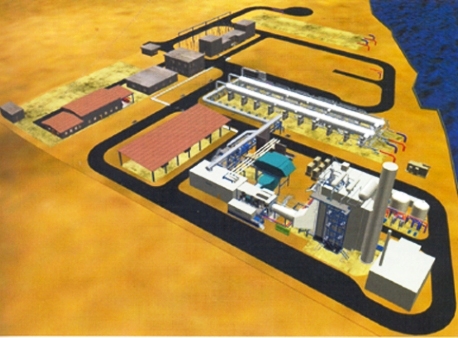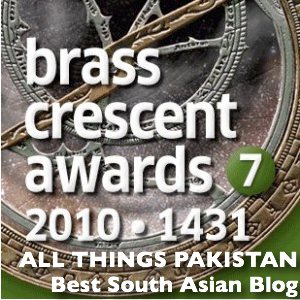On the same day (Feb 11, 2008) when South Bound Lyari Expressway was inaugurated, another important project of Pakistan reached its opening milestone. This one is called the DHA Desalination and Power Plant. It is the first project of its kind in Pakistan which desalinates water from the Arabian Sea for human consumption as well as provides Electrical Power to the KESC Grid.

The Capacity:
The capacity of the Power plant is 94 MW (Mega Watts) and that of the desalination plant is 3 MIGD (Million Imperial Gallons per Day). Electrical Power generated here is supplied to the 132 KV (kilo-volt) KESC grid whereas the Desalinated Water is supplied to CBC/DHA for local distribution.
The fuel for the Power Plant is Natural Gas which will be provided by the Sui Southern Gas Company Limited (SSGCL) via 20″ diameter pipeline. The Electrical Power is generated by two turbines. One is Gas fired with the generation capacity of 67MW. The other is Steam fired with the generation capacity of 27 MW.
Who Did What:
The project is carried out by DHA Cogen Limited (DCL). It is a Public Limited Company which was incorporated in the city of Karachi on January 19, 2003. The company is a joint venture between Defence Housing Authority, Karachi (DHA) and Sacoden Investments, Singapore (SI). The contract for building the Power Plant was given to Siemens AG Germany (SAG) who also supplied the two turbines used in the plant. The Desalination Plant is built by Alfa Level, Copenhagen, Denmark (ALC) and the civil works is carried out by Siemens Pakistan (SPK).
Following is the photo of DHA Desalination Plant

The Civil Works component of the project was a huge task in itself which included the necessary support infrastructure in terms of fuel gas supply, seawater intake, 132KV Sub Station, water treatment, under ground storage, workshop, stores, control room and administration offices.
The Processes:
 A neat thing about this project is that a by-product of power generation i.e. steam is used as a fuel to desalinate water. The two power turbines of the Power station are connected together (as a single shaft configuration) along with a Heat Recovery Steam Generator (HRSG). The steam turbine is designed to exhaust steam directly to the two MED (multi effect distillation) plants to provide energy input to the MED desalination process.
A neat thing about this project is that a by-product of power generation i.e. steam is used as a fuel to desalinate water. The two power turbines of the Power station are connected together (as a single shaft configuration) along with a Heat Recovery Steam Generator (HRSG). The steam turbine is designed to exhaust steam directly to the two MED (multi effect distillation) plants to provide energy input to the MED desalination process.
The photo to the above right shows MED desalination plant installed at HUBCO Karachi. It is similar in MED processes but much smaller in design to the DHA Desalination plant.
Another Success Story of Pakistani Engineers
Here I also want to mention yet another success story coming out of Pakistan’s Public universities. The local project Manager of Siemens AG Germany overseeing the work on the Power Plant is Mr. Yasir Jilani, a EE graduate from the NED University of Engineering and Technology, Karachi. I want to present it yet another success story of Engineering graduates coming out of Pakistan’s public Educational System.
Location of the Plant
Plant is located at the southern tip of DHA phase VIII. Google Earth has not been updated for Karachi for many years now therefore it still shows a flat ground in most of DHA phase VIII. The pointer in following image shows where the present day plant is located

In an age when Pakistan is facing serious power shortage, this plant is certainly a welcome addition.
Pakistan’s Other Water Desalination Plants:
1. A desalination plant was installed in 1987 in Saindak Copper Mines in Balochistan. This plant uses the brackish water Reverse Osmosis (BWRO) process.
2. Another desalination plant was installed in 1995 and commissioned in 1996 at the HUBCO power station outside Karachi. This plant uses Reheat type Multi-effect distillation (MED) desalination.
3. KANUPP near Karachi operates a Sea Water Reverse Osmosis (SWRO) desalination plant to meet its operating requirements.
References:
1. DHA Cogen Limited
2. Dawn Newspaper Report on Plant Inauguration
3. Google Earth




















































Dear Sajid and all,
Bottled water is 300 times more hazardous to environment (and utimately to humans as well). Mayors of many states and cities ike London and California are in the process of launching a complete ban on bottled water. I have been doing environmental sampling of potable water in Riyadh for the last 5 years and never found a problem except a few isolated cases, on the other hand whenever we have sampled bottled water (x,y,z, etc) most of the time we were having issues of contamination.
Take care and MaAssalam
It is my understanding that desalination contributes to acidification of the oceans (which not only is affecting sea life;but, will contribute to runaway global warming).
Pakistani’s should look towards water reclycling. This especially important as those farmers are depleting groundwater.
http://www.newscientist.com/article.ns?id=dn6321_
Asian farmers sucking the continent dry
Second image in this post is a new addition. Photo added on 2/22/08.
Pervaiz Saheb, as promised, I’ve added a satellite image of plant location. It is towards the end of the post. take a look.
@Bilal Zuberi
I’ve handled quite a few transactions for these new IPPs being set up. There’s this website set up by Private Power & Infrastructure Board which covers all the details that you may be interested in.
In short the tariff at which these IPPs would sell their electricity to NEPRA (the policy stipulates that they sell only to NEPRA if they want a license to build and operate an IPP) is divided into two parts: Capacity Purchase Price (CPP) and Energy Purchase Price (EPP). The CPP would cover for all fixed costs (Ops and maintenance, debt the IPP would undertake to finance the project). The EPP is for fuel components. All escalations related to fuel prices and forex rates are transferable to NEPRA and the agreements are covered by GoP guarantees. It’s a very safe investment and guarantees a rather stable RoI.
One thing that I mentioned in my earlier comment for this post is that all these plants either depend on Sui Gas or diesel. Both are becoming harder to provide…